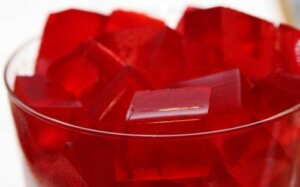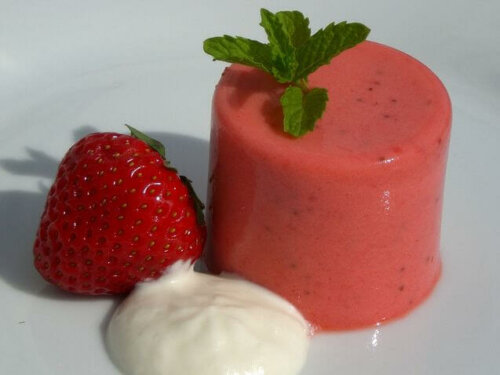Gelatin Is the Best Ally for Your Joints


Written and verified by psychologist Valeria Sabater
Gelatin and its supplements are great health and beauty allies as they help preserve our teeth and bones. Also, it doesn’t contain fat and you can enjoy it as a side dish in many meals. Not to mention it’s really tasty and well-liked by adults and children alike. But you already know all of that. What you may not know is it’s also a wonderful ally in the maintenance of your joints.
Health benefits of gelatin on joints

- Gelatin is basically protein obtained by extracting and processing collagen from animal skin and bone tissue. Its actual composition is 90% protein, 2% mineral salts, and 8% water.
- You can successfully use gelatin as a therapeutic supplement. It helps restore the collagen in your joints, thanks to its ability to synthesize it in the body. Thus, it also allows you to strengthen your nails and hair.
- Also, thanks to its fluoride content, it preserves the enamel of your teeth and prevents cavities. You may not be aware of it but gelatin is a wonderful substance.
- In fact, you’ll benefit from its amino acids if you eat it daily as they help regenerate the muscle tissue.
- Gelatin is a source of calcium, magnesium, phosphorus, and silicon. These minerals help restore the bone system and the renewal of cartilage. This is why we think it’s the best ally for your joints.
- In addition, gelatin promotes proper bone and skin regeneration. After the age of 25, the body stops producing this substance. Thus, its consumption becomes necessary.
It may interest you: Honey and Turmeric Gelatin Squares: A Great Anti-inflammatory!
Keep in mind you’ll only obtain results if you eat it daily. You must consult a doctor if you have severe joint pain as you’ll need an accurate diagnosis. As you can see, gelatin is merely a supplement, not a solution for this condition.
Amount to consume
It’s easy to eat gelatin. In order to help rebuild cartilage and bones and increase the speed of joint regeneration, you’ll only need 10 grams per day. Eating it as a dessert is perfect. In addition, you can eat as much as you want and you don’t have to worry about fat. As we mentioned above, this substance is pure protein.
Thanks to gelatin’s incredible collagen content it can help strengthen your bones, tendons, cartilage, and ligaments. But yes, you must consume it regularly. Actually, it’s quite affordable so you and your family can have it daily.
How to consume gelatin

Check out: Ginger and Turmeric, the Medicinal Drink for Your Joints
Nutritionists also advise to consume it with fruits. As you can see, it would be quite simple to make a mousse or some other light dessert that doesn’t contain refined sugar.
Finally, it isn’t a good idea to blend it with fruit such as pineapple, papaya, kiwi, or figs. This is because all of these contain enzymes that would null its effects by preventing the solidification of gelatin in our bodies. Thus, it would block its properties and no longer contribute to the maintenance and recovery of your joints.
All cited sources were thoroughly reviewed by our team to ensure their quality, reliability, currency, and validity. The bibliography of this article was considered reliable and of academic or scientific accuracy.
- Meléndez-Hevia, E., De Paz-Lugo, P., Cornish-Bowden, A., & Cárdenas, M. L. (2009). A weak link in metabolism: the metabolic capacity for glycine biosynthesis does not satisfy the need for collagen synthesis. Journal of Biosciences. https://doi.org/10.1007/s12038-009-0100-9
- Lodish H, Berk A, Zipursky SL, et al. (2000). Collagen: The fibrous Proteins of the Matrix. In Molecular Cell Biology.
- Hegazy, E. M., & El-Sayed Khamis, N. H. (2014). Effect of fresh garlic and ginger on the shelf-life of Gelatin waste used for improvement of plant growth. World Applied Sciences Journal. https://doi.org/10.5829/idosi.wasj.2014.30.01.821
- Schauss, A. G., Stenehjem, J., Park, J., Endres, J. R., & Clewell, A. (2012). Effect of the novel low molecular weight hydrolyzed chicken sternal cartilage extract, biocell collagen, on improving osteoarthritis-related symptoms: A randomized, double-blind, placebo-controlled trial. Journal of Agricultural and Food Chemistry. https://doi.org/10.1021/jf205295u
This text is provided for informational purposes only and does not replace consultation with a professional. If in doubt, consult your specialist.








